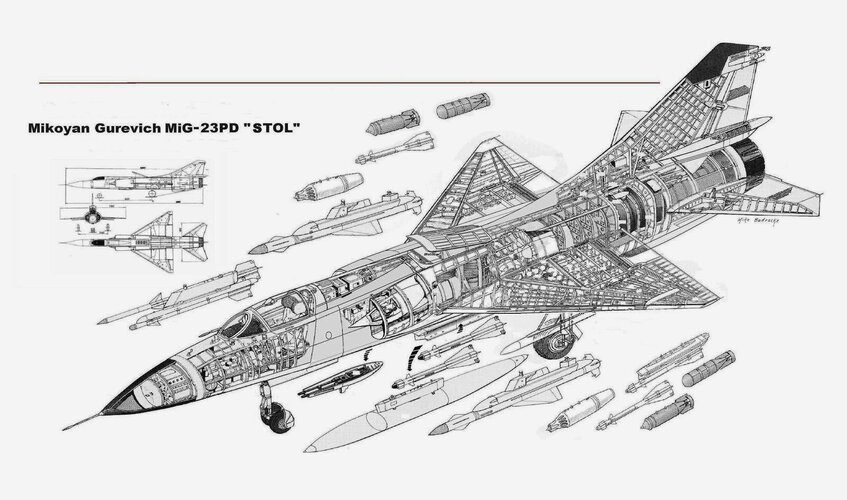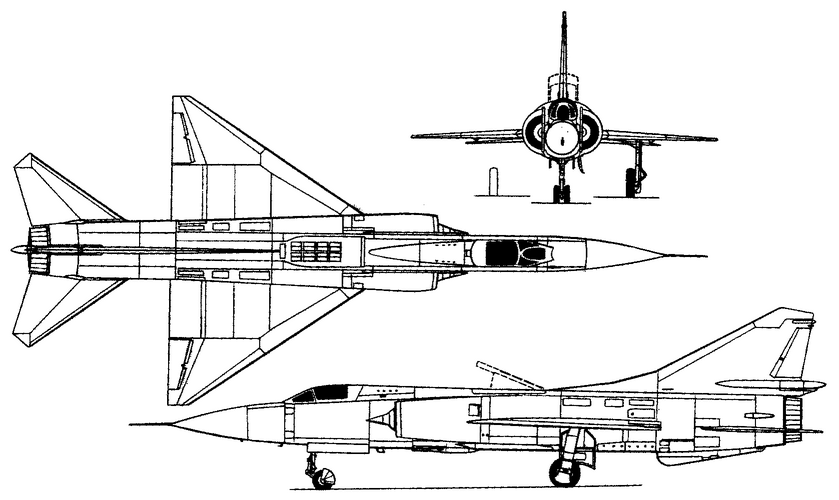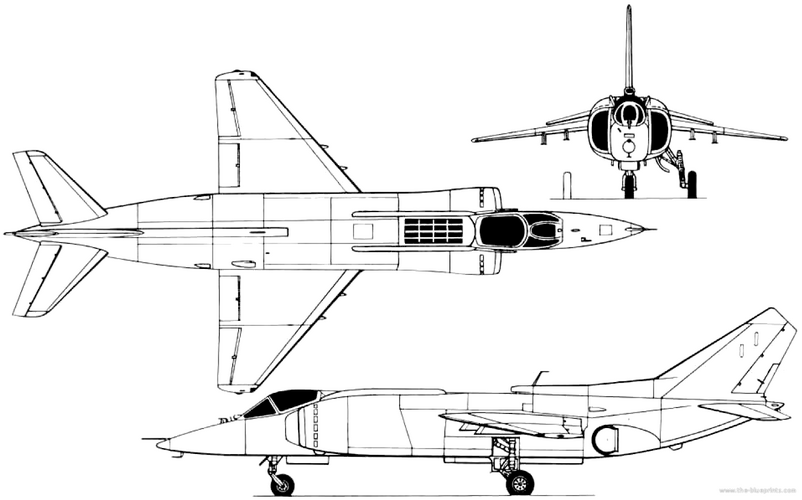The design of the MiG-23 frontline fighter was set by the decree of the Central Committee of the CPSU and the Council of Ministers of the USSR of December 3, 1963, which envisaged the creation of a promising fighter with a new S-23 weapons system (it was to include the Sapphire-23 radar, TP-23 thermal direction finder, ASP-23 automatic gunsight and K-23 medium-range air-to-air guided missiles, as well as Kh-23 tactical air-to-surface guided missiles) and improved flight performance characteristics. In 1964, the tactical and technical requirements for the aircraft were clarified, primarily in terms of ensuring its operation from short or damaged runways. The latter requirement was given special importance, in connection with which it was decided to provide special devices in the aircraft design to reduce the takeoff and landing run (it was assumed that it would be possible to reduce it to 180-200 m).
Inside the fuselage of the fighter behind the pilot's cabin, it was planned to install vertically two additional RD36-35 lift engines with a thrust of 2350 kgf each, designed by OKB-36 MAP (chief designer P.A. Kolesov), which would be turned on only during takeoff and landing modes, creating a noticeable increase in the lift force of the aircraft wing. The installation of additional lift engines was tested in 1966-1967 on the experimental aircraft E-7PD (23-31, later designated MiG-23PD), created on the basis of the serial fighter MiG-21S. In terms of aerodynamic configuration, the MiG-23 (23-01) was close to the MiG-21, it retained the same mid-mounted delta wing and horizontal tail. At the same time, the fuselage design was new. The aircraft was equipped with a new engine - a R27F-300 turbofan with a thrust of 7800 kgf designed by OKB-300 MAP (General Designer S.K. Tumansky) - and side air intakes of a semicircular cross-section, while the entire forward section of the fuselage could be occupied by a powerful radar station. Construction of a prototype MiG-23 with lift engines began in March 1966 and continued for 8 months. On November 30 of the same year, the aircraft was relocated to the LIS OKB in Zhukovsky, where ground testing of the R27F-300 engine began while awaiting delivery of a flying prototype. The first (and only) MiG-23 type 23-01 was not equipped with a radar or command radio link equipment - instead, control and recording equipment units (CRE) were installed.
The aircraft did not have a cannon yet. The first flight on the experimental aircraft 23-01 (tail number 23) was performed on April 3, 1967 by test pilot P.M. Ostapenko, and already on July 9 he demonstrated the takeoff and landing of the new fighter at the air parade in Domodedovo. However, work on this aircraft soon ceased.
Even before the start of testing 23-01, it became clear that the fighter layout with additional lift engines did not have much prospects. Additional engines took up a lot of space in the fuselage, significantly reducing the useful volumes for fuel and cargo capacity, and were used in flight for only a few minutes. As a result, taking into account the requirement to increase the range and duration of the flight, for the further implementation of the program for the creation of the MiG-23 fighter, another version of the aircraft layout was adopted, providing for the use of a wing with variable geometry in flight.
Below is a description of the aircraft taken from the book by B.A. Orlov, Notes of a Test Pilot.
"In those years, intensive work was being carried out all over the world to create aircraft with vertical takeoff and landing (VTOL) and aircraft with short takeoff and landing (STOL). In France, the Balzac was tested, built on the basis of the famous Mirage-3 fighter, with engines installed on it to create vertical thrust, in England the Harrier successfully flew, in which one engine serves both for vertical takeoff and landing and for horizontal flight. Our Yakovlev Design Bureau created the Yak-36, which had a cruise engine for normal flight and lift engines that worked only during takeoff and landing. We and the Sukhovites studied the possibility of reducing takeoff and landing distances using small vertical thrust engines that are unable to lift the aircraft vertically, but somehow reduce the weight of the aircraft. For this purpose, the Sukhoi Design Bureau built the Su-15VD based on the regular Su-15 interceptor fighter, installing lift engines, and we installed two lift engines on a slightly modified MiG-21 and called this experimental aircraft "product 23-31". In June 1966, P.M. Ostapenko lifted this machine into the air.
The lift engines on the "23-31" were located in the middle part of the fuselage, which significantly reduced the capacity of the fuel tanks, which is why you can fly this aircraft for no more than 15-17 minutes, the chassis did not retract, since there was nowhere to retract it again due to the installation of lift engines, therefore the machine did not rise above one and a half kilometers. And it had nothing to do at a higher altitude - mainly, the behavior of the aircraft on takeoff and landing was tested.
The nozzles of the lift engines were equipped with special grids that allowed the gas stream to be deflected back by 10 degrees and forward by 5 degrees, which slightly increased the overall thrust during takeoff, and during landing the forward-deflected stream acted as a gas brake.
Takeoff and landing on this aircraft were not easy. The exhaust stream of the lift engines spread to the sides near the ground, creating a suction effect; with a change in speed and altitude, the influence of this effect affected the aircraft's lift, stability and controllability in different ways. If there were fewer problems during takeoff - a slight rebalancing, i.e. changing the pitch angle of the aircraft with the control stick fixed, - after takeoff from the ground did not present any particular difficulty for the pilot, but on landing, in addition to rebalancing, this "suction" caused a vigorous descent of the aircraft and the same braking. Therefore, immediately before landing, it was necessary to increase the thrust of the cruise engine to maximum, and sometimes even turn on the afterburner...
Once Fedotov and I, sorting through the flight sheets, came across a sheet with Ostapenko's report on the execution of the task on "23-11", where Petro wrote: "Takeoff at maximum, landing at afterburner." At first we thought he was mistaken, but Pyotr Maksimovich never thought of making a mistake - it turns out that it was so ...
All this complicated the takeoff and landing on this machine, and there was no big gain in the length of the takeoff and landing distance due to the apparent weight reduction.
Despite this, the construction of an earlier prototype aircraft was underway according to this scheme, and in March 1967 Ostapenko raised the MiG-23-01, a beautiful aircraft with a sharp nose, side semicircular air intakes, a new powerful engine. Ostapenko performed several dozen flights on it, flew at a parade in Domodedovo, and that was the end of the story of this aircraft - they gave it away somewhere, to a museum, I think, to MAI. Besides Pyotr, Fedotov made a couple of flights on the MiG-23-01.
This scheme did not justify itself, although the takeoff and landing run on the MiG-23-01 were comparatively small - it is too expensive to carry engines used only for takeoff and landing, taking up the space of fuel and equipment.
The Sukhovites, having flown the Su-15VD - mainly the remarkable test pilot Evgeny Stepanovich Solovyov, - and having tested the T-6 aircraft with lift engines, were convinced that their "game is not worth the candle" and built the T-6 with a wing of variable sweep in flight - the famous Su-24 bomber.
I was assigned as Ostapenko's backup, which raised my self-esteem considerably. I accompanied him on a MiG-21 with a cameraman several times, and then I flew on this interesting plane myself. Unfortunately, I soon had to fly on a long business trip, and I performed subsequent flights on the "23-31" in late autumn, when the main part of the program was finished. It was not without "introductions" - on one flight I took off without making sure that one lift engine was fully engaged at "maximum". I overshot, of course, for which I received a small "scolding" from Fedotov, but it was very difficult to see the green light indicating that the engine had reached maximum mode, especially in bright sunlight. With the advent of the MiG-23-01, the first experimental machine with lifting engines flew little for testing, but they decided to show it at the parade in Domodedovo, so they performed a couple dozen more training flights and a demonstration flight at the parade, and then it ended its flight existence."
Flight characteristics:
Modification MiG-23PD
Wingspan, m 7.72
Length, m 16.80
Height, m 5.15
Wing area, m2 40.00
Weight, kg
empty aircraft 11200
maximum takeoff 18500
Engine type
main 1 turbofan R-27-300
auxiliary 2 turbofan RD-36-35
Non-boosted thrust, kgf
main 1 x 7800
auxiliary 2 x 2350
Maximum speed, km/h 1600
Practical ceiling, m
Crew, persons 1
Armament: one 23-mm cannon
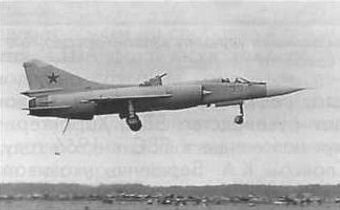 e88093_3b0e69d8f3864dcca9a435b159307762~mv2.jpg9.4 KB · Views: 300
e88093_3b0e69d8f3864dcca9a435b159307762~mv2.jpg9.4 KB · Views: 300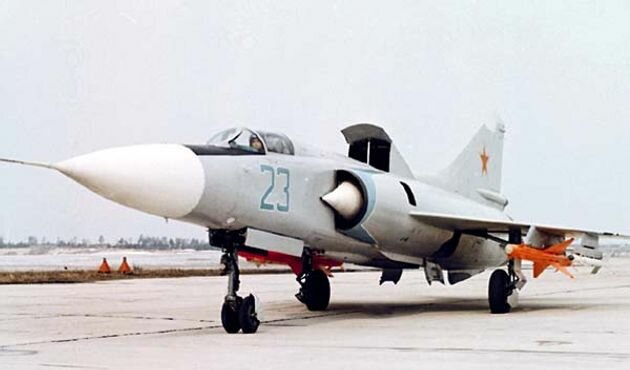 e88093_131ddf3a48824fb8b4d65b8417058293~mv2.jpg26.5 KB · Views: 234
e88093_131ddf3a48824fb8b4d65b8417058293~mv2.jpg26.5 KB · Views: 234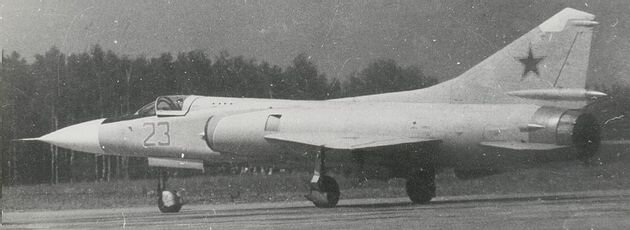 e88093_3071007184d54020b6da71d0d74fc007~mv2.jpg24.4 KB · Views: 288
e88093_3071007184d54020b6da71d0d74fc007~mv2.jpg24.4 KB · Views: 288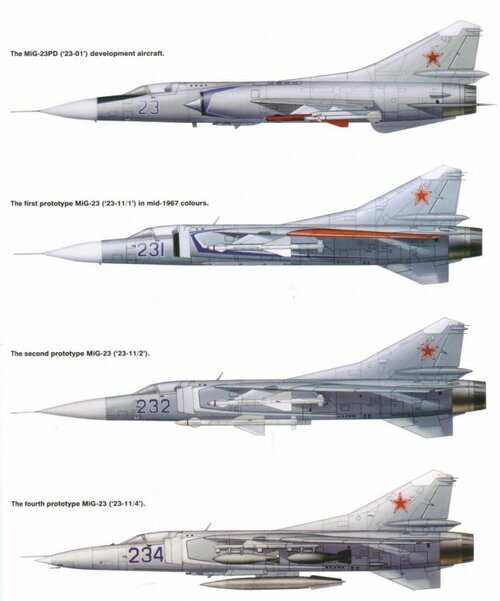 ee22bc165bea105b1bc3970028b01882.jpg72.6 KB · Views: 311
ee22bc165bea105b1bc3970028b01882.jpg72.6 KB · Views: 311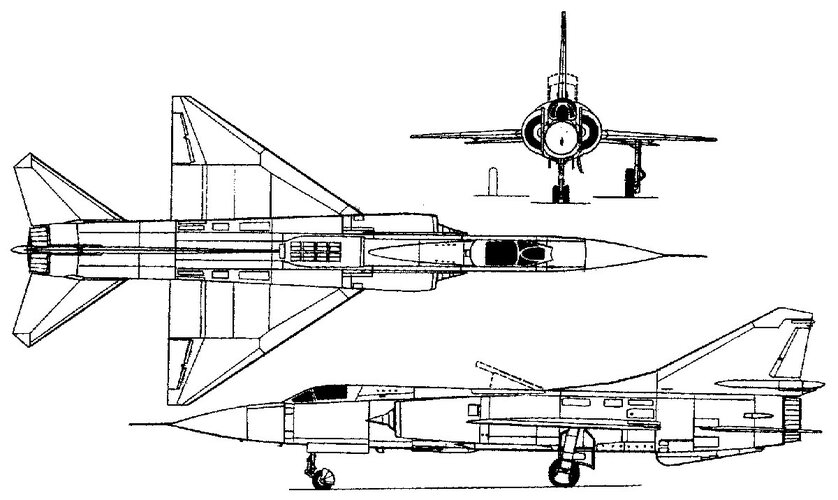 mig-23pd.jpg137.1 KB · Views: 278
mig-23pd.jpg137.1 KB · Views: 278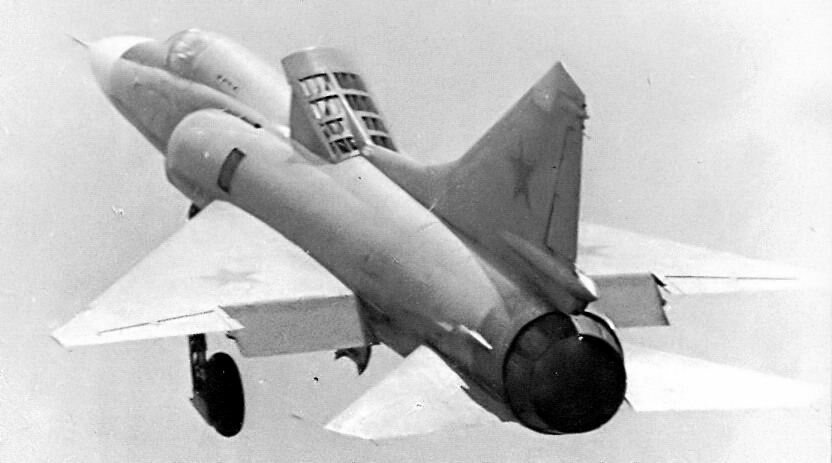 mig23pd_02.jpg41.8 KB · Views: 217
mig23pd_02.jpg41.8 KB · Views: 217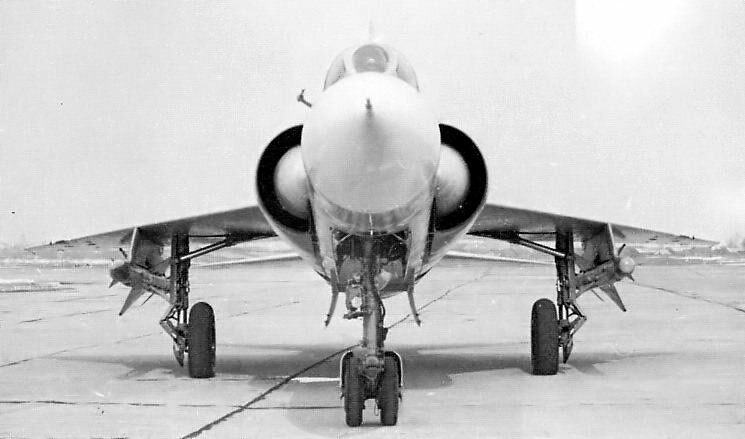 mig23pd_03.jpg36.7 KB · Views: 205
mig23pd_03.jpg36.7 KB · Views: 205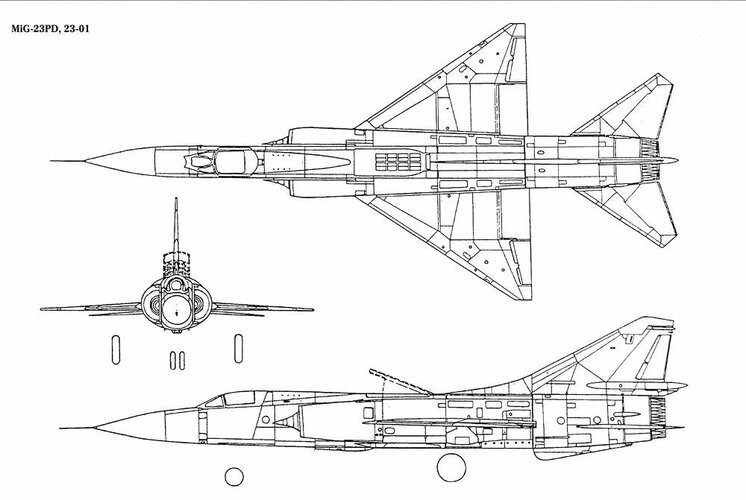 mig23pd_04.jpg60.4 KB · Views: 220
mig23pd_04.jpg60.4 KB · Views: 220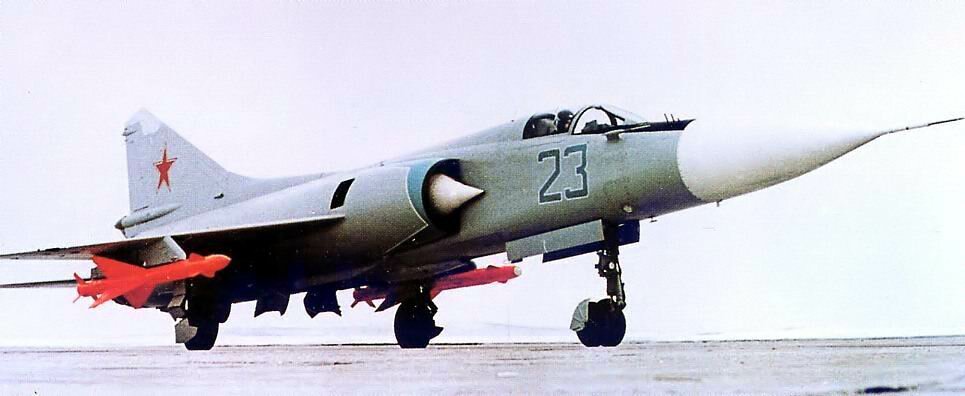 mig23pd_06.jpg44.2 KB · Views: 226
mig23pd_06.jpg44.2 KB · Views: 226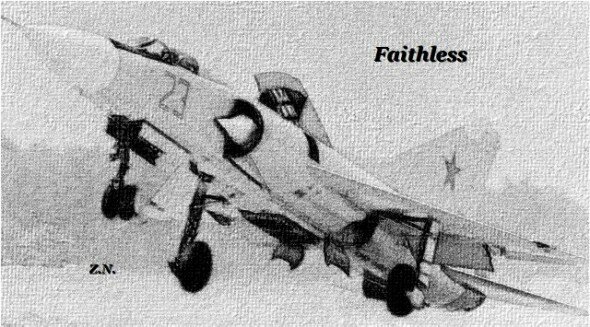 MiG-23PD_kresba_ZN_1.jpg81.5 KB · Views: 190
MiG-23PD_kresba_ZN_1.jpg81.5 KB · Views: 190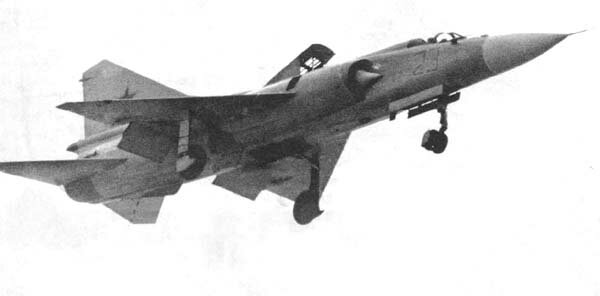 mig23pd-1.jpg11.6 KB · Views: 179
mig23pd-1.jpg11.6 KB · Views: 179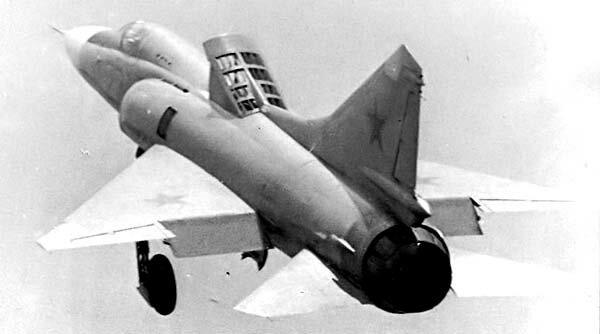 mig23pd-8.jpg18.8 KB · Views: 221
mig23pd-8.jpg18.8 KB · Views: 221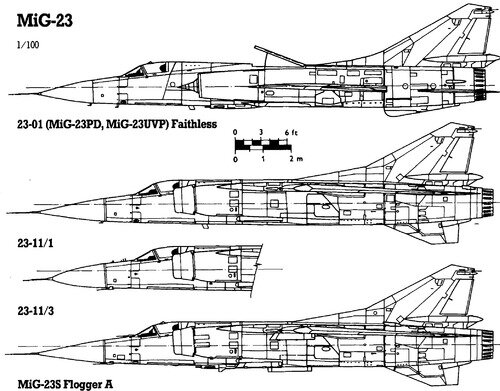 mikoyan_gurevich_mig_23_flogger-81289.jpg65.4 KB · Views: 251
mikoyan_gurevich_mig_23_flogger-81289.jpg65.4 KB · Views: 251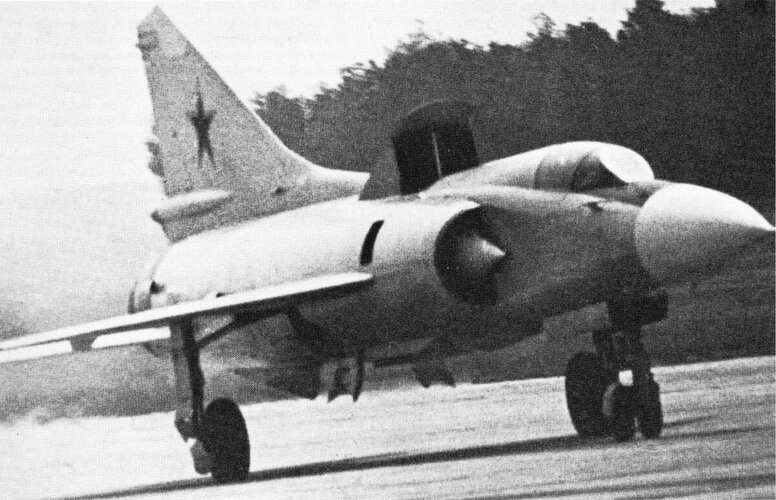 scale_1200.jpg239.4 KB · Views: 325
scale_1200.jpg239.4 KB · Views: 325
